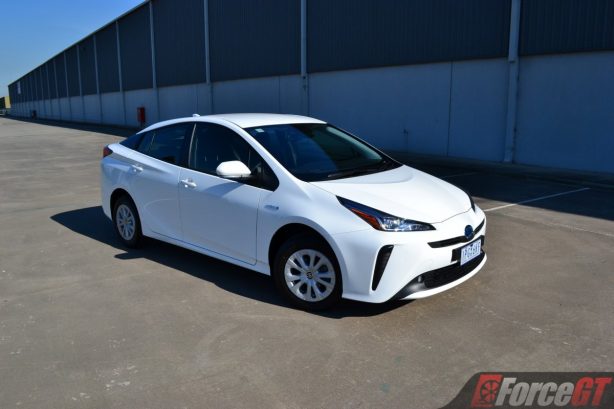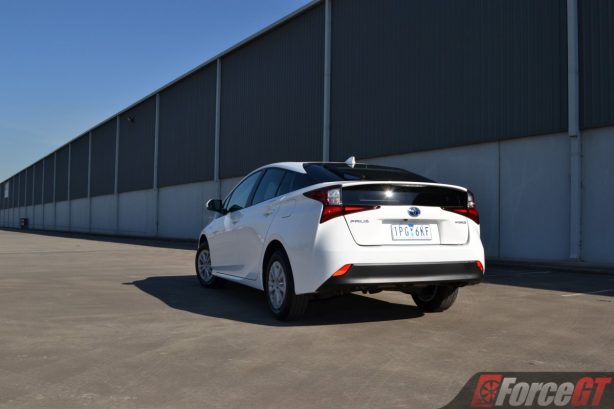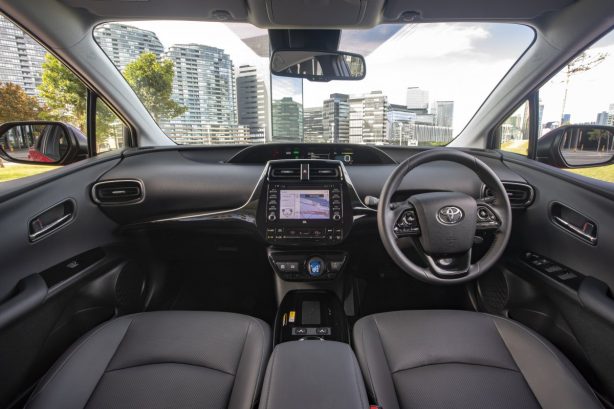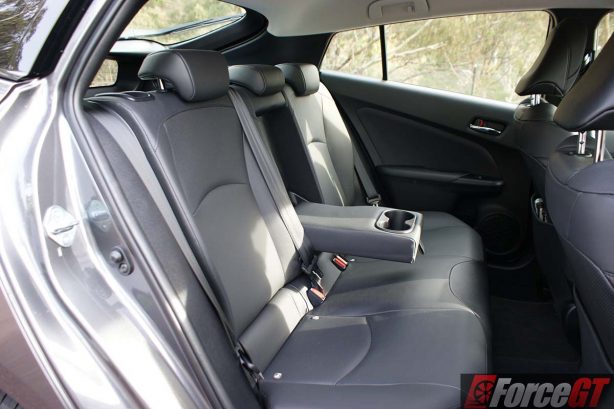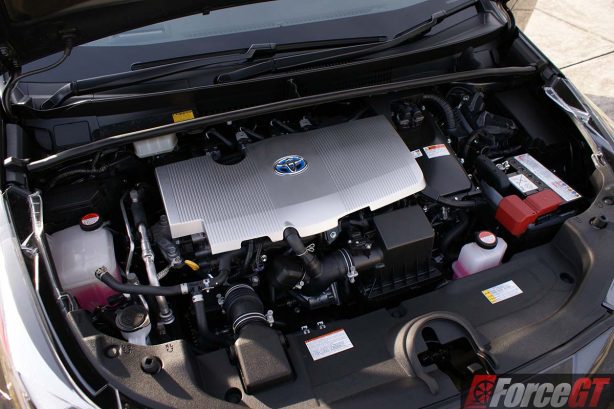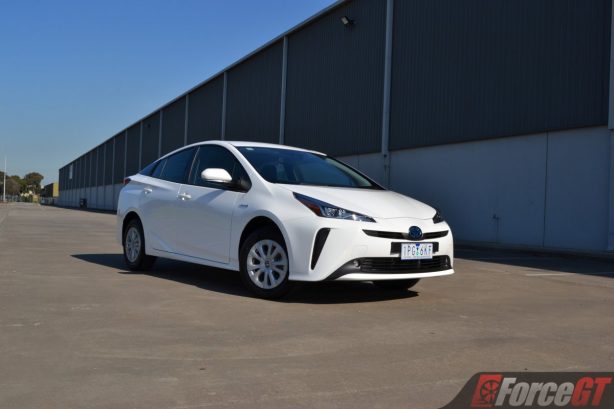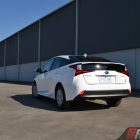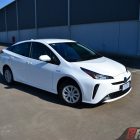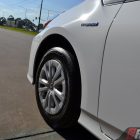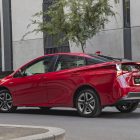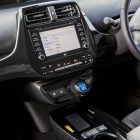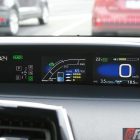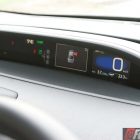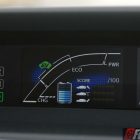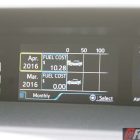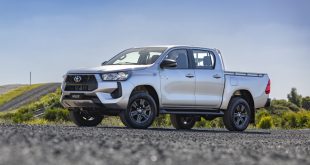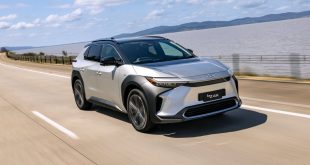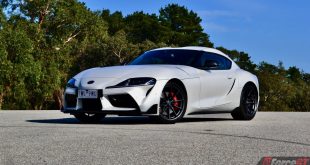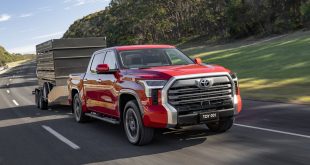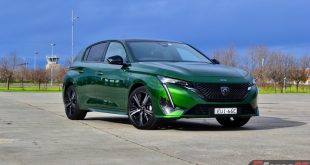What you see here is the world’s best-selling hybrid vehicle. The pioneering Toyota Prius became the world’s first mass-produced hybrid car back in 1997 and has since racked up over 5 million sales globally. It represents more than half of all hybrids sold worldwide by Toyota.
The automotive landscape has come a long way since the Prius first burst on scene. With emerging rivals such as the Hyundai Ioniq, Holden Volt and Honda Insight all wanting a fair share of the pie, the Prius now faces stiff competition. And this means an update is in order.
To find out if Toyota has done enough to keep the Prius on the top spot of the podium, we spent a week putting one to the test.
What’s new for 2019?
Still odd looking, still quirky, the Prius’ design has never been one of its highlights. But that’s precisely what the Toyota designers wanted from day one. It’s not exactly futuristic, nor is it conventional, it’s just different – not in a good way, not in a bad way either.
But one thing is certain, we are just glad Toyota has done away with the ‘what were they thinking?’ tear-drop headlight and taillight designs of the previous model and replaced them with horizontal and more normal looking ones.
And those are just about the biggest change in the styling department, though a fine set of eyes will find the updated front and rear bumpers, the former with revised lower intake and contributes to a slightly longer (+35mm) overall length.
Both the base Prius and premium-grade Prius i-Tech models also feature refreshed 15-inch and 17-inch alloy wheels.
The Prius uses a 15-inch aluminium wheel with a redesigned 10-spoke silver cover while the Prius i-Tech features 17-inch five-spoke alloys in a new titanium-like paint and black finish.
The updated Prius hatch is also available in two new exterior metallic paint finishes, Feverish Red and Blue Gem.
The interior of the upgraded Prius features new black cloth upholstery while the i-Tech variant maintains its premium leather-accented seats.
A redesign of the centre console that incorporates two cupholders, seat heating switches and a wireless phone charger, further improves interior style and ergonomics.
What features does it offer?
The 2019 Prius models gain the ‘latest’ generation Toyota multimedia system with a new 7-inch touchscreen that enables pinch, swipe and flick gestures.
While it features AM/FM/DAB+ radio, USB and Aux inputs, Bluetooth connectivity and satellite navigation, the interface still looks dated and Apple CarPlay and Android Auto smartphone pairing are still lacking.
Toyota claims the improved voice recognition now offers a broader range of commands including the ability to set an address while driving and option to search through local points of interest by business name or category.
We are sad to report it’s still not up to scratch, with the voice command feature often getting it wrong.
The plus side is the range is pretty well equipped, with keyless entry and start, Qi wireless charging pad, a 10-speaker JBL audio system, auto LED headlights, auto wipers and heads-up display all fitted as standard.
Safety is taken care of by the Toyota Safety Sense suite of features that includes active cruise control, pre-collision safety system, lane departure alert with steering assist and auto high beam, together with reversing camera and seven airbags.
Stepping up to the Prius i-Tech nets you Blind Spot Monitor and Rear Cross Traffic Alert.
Is it practical?
Very. The Prius’ cabin is one of the most roomy of any small car, with useful storage compartments dotted around the interior. The bin under the front centre armrest, for instance, is huge and both the front and rear rows are each treated to two cupholders and bottle holders.
Legroom and headroom is generous throughout, but the same can’t be said for the boot space which, at just 297 litres (343 litres in i-Tech due to the use of a tyre repair kit instead of a spare tyre), is relatively small. Fold the 60/40 split rear seats however and you’ve got a very generous 1,633 litres.
What’s under the skin?
The latest iteration of Prius carries over the previous petrol-electric hybrid drivetrain combining a 1.8-litre Atkinson cycle petrol engine with two electric motors – one acting as a generator and one to drive the front wheels. Combined output is rated at 90kW and 163Nm, all of which go the front wheels via a CVT automatic.
Fuel consumption is probably the most important factor for Prius buyers and they will be impressed with our real world average figure of just 3.9L/100km, which is not far off the official figure of 3.4L/100km.
Unlike normal cars, hybrid vehicles can maintain high fuel efficiency even in city traffic thanks to the help of the electric motors and that’s key to its low fuel consumption.
How does it drive?
The Prius’ performance can be described as dull at best, even with the drive mode set to Sport. Not surprising as primarily the Prius is designed to squeeze every drop of fuel into kilometres.
It’s just not particularly pulsating when you put your foot down, despite the hybrid drivetrain’s adequate power levels. Unlike modern CVTs found in numerous new cars in the market today including some from Toyota itself, the one in the Prius still has that rubber band feel (revs flare that is disproportionate to acceleration) that numbs the driving experience.
Treat the Prius as an economical cruiser and it starts to make a lot more sense. City driving is very relaxed and refined thanks to the linear torque provided by the electric assist motor. Rolling off in the Prius, battery power provides the initial noiseless propulsion during light acceleration. As more power is needed, the petrol engine kicks in so both power sources work in tandem for added acceleration.
The transition from pure electric power to petrol-electric is imperceptibly seamless. There is barely a hint when the engine kicks in. Coupled with the CVT, the drive around town is amazingly quiet, leisurely and smooth.
The Prius was the first model in the Toyota range to feature the Toyota New Generation Architecture (TNGA) platform and hence its handling isn’t as shabby as you’d think it is. Turn in is sharp with good grip and composure to keep the eco hatch on its intended course. There’s a fair bit of roll in corners but it feels relatively well balanced for a front-wheel driven car thanks in part to the battery mounted just above the rear axle aiding front to rear weight distribution.
The steering is numb but precise, although the weightage is unnecessary and largely artificial in Sport mode. As with most hybrids, brake feel is inconsistent and numb as the regenerative braking technology harvests the otherwise wasted energy to recharge the batteries.
Elsewhere, the standard suspension offers remarkable ride quality, soaking up bumps and ruts with aplomb without feeling too floaty.
What is the running cost?
Like almost everyone else these days, Toyota has recently increased its warranty from 3 years to 5 years without a mileage cap.
But unlike others, the Prius still requires a visit to the dealer every 6 months or 10,000km, which ever comes first, when others have moved on to 12-monthly or even 24-monthly servicing interval. Thankfully, the service cost is capped at $140 per service for the first three years/60,000km.
Verdict
Design & Comfort
Performance & Handling
Quality
Economy
Equipment & Features
OUR SCORE
3.8/5
+ Plus
- Impressive fuel economy
- Quiet and comfortable ride
- Spacious cabin
– Minus
- Clumsy infotainment interface
- Short service interval
- Pricey i-Tech model
Overall
As far as efficiency is concerned, the Toyota Prius is still one of the most economical cars on sale today. Match that with a spacious cabin and conventional driving feel the Prius makes a viable, no fuss and thrifty city runabout. And the 2019 updates can only add to its appeal.
But at $36,590 plus on-road costs a pop, or $44,050 for the i-Tech, the Prius finds itself in a bit of a crisis in 2019. For $5k less, there’s the Corolla ZR Hybrid which is a sportier and better looking alternative to the Prius. And if more space is needed, there’s the Camry Hybrid for around $40k.
Then, there’s the Prius direct competitor, the Hyundai Ioniq, which is a few grand cheaper in hybrid form. And hardcore tree-huggers can now turn to the Ioniq electric for not much more.
Perhaps, it’s now time for Toyota to rethink its strategy for the Prius before the market space changes even more.
2019 Toyota Prius pricing and specification
| Price (Excl. on-road costs): | From $36,590 to $44,050 As Tested: $36,590 |
| Country of Origin: | Japan |
| Warranty: | 5 years / Unlimited km |
| Service Intervals: | 6 months/10,000 km |
| Engine: | 1.8-litre four-cylinder: 72kW @ 5,200, 142Nm @ 3,600rpm Electric Motor: 53kW, 163Nm Combined output: 90kW / 163Nm |
| Transmission: | Constantly Variable Transmission (CVT) |
| Drivetrain: | Front-wheel drive |
| Fuel Consumption (L/100km): | Claimed: 3.4 (combined) / Actual: 3.9 |
| Fuel Tank Capacity (L): | 43 |
| Body: | 5-door liftback |
| Seats: | 5 |
| Safety: | Standard: ANCAP: 5 star, 7 Airbags, ESC, ABS, EBD, Hill Start Assist, Reverse Camera, Pre-collision Safety System, i-Tech: Radar Cruise Control, Blind Spot Assist |
| Dimensions (L/W/H/W-B) mm: | 4,575/1,760/1,490/2,700 |
| Tare Mass (kg): | 1,375 |
| Entertainment: | 7-inch touchscreen infotainment system, 10 speakers |
| Towing Capacity (kg): | Braked: 725, Unbraked: 725 |
Competitors: Hyundai Ioniq, Holden Volt, Toyota Corolla Hybrid, Honda Insight
 ForceGT.com Car News, Car Reviews, Video Reviews, Tuning and much more.
ForceGT.com Car News, Car Reviews, Video Reviews, Tuning and much more. 